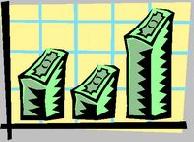
 |
|
| Financial Terms | |
| AD |
|
Information about financial, finance, business, accounting, payroll, inventory, investment, money, inventory control, stock trading, financial advisor, tax advisor, credit.
Main Page: finance, credit, investment, financial advisor, accounting, stock trading, money, financial, |
Definition of AD
ADAggregate demand.
Related Terms:ADF (annuity discount factor)the present value of a finite stream of cash flows for every beginning $1 of cash flow. Additional hedgeA protection against borrower fallout risk in the mortgage pipeline. Adjustable rate preferred stock (ARPS)Publicly traded issues that may be collateralized by mortgages and MBSs. Adjusted present value (APV)The net present value analysis of an asset if financed solely by equity Administrative pricing rulesIRS rules used to allocate income on export sales to a foreign sales corporation. Advance commitmentA promise to sell an asset before the seller has lined up purchase of the asset. This Adverse selectionA situation in which market participation is a negative signal.  American Depositary Receipts (ADRs)Certificates issued by a U.S. depositary bank, representing foreign Balance of tradeNet flow of goods (exports minus imports) between countries. Basket tradesRelated: Program trades. Bill of ladingA contract between the exporter and a transportation company in which the latter agrees to Block tradeA large trading order, defined on the New York Stock Exchange as an order that consists of Brady bondsBonds issued by emerging countries under a debt reduction plan. Bull spreadA spread strategy in which an investor buys an out-of-the-money put option, financing it by Canadian agenciesAgency banks established by Canadian banks in the U.S. Counter tradeThe exchange of goods for other goods rather than for cash; barter.  Credit spreadRelated:Quality spread Cumulative Translation Adjustment (CTA) accountAn entry in a translated balance sheet in which gains Day tradingRefers to establishing and liquidating the same position or positions within one day's trading. Dead cat bounceA small upmove in a bear market. DowngradeA classic negative change in ratings for a stock, and or other rated security. Effective spreadThe gross underwriting spread adjusted for the impact of the announcement of the common Flat trades1) A bond in default trades flat; that is, the price quoted covers both principal and unpaid, Floor traderA member who generally trades only for his own account, for an account controlled by him or Forward tradeA transaction in which the settlement will occur on a specified date in the future at a price Graduated-payment mortgages (GPMs)A type of stepped-payment loan in which the borrower's payments Gross spreadThe fraction of the gross proceeds of an underwritten securities offering that is paid as  Head & shouldersIn technical analysis, a chart formation in which a stock price reaches a peak and declines, Homemade dividendSale of some shares of stock to get cash that would be similar to receiving a cash dividend. Homemade leverageIdea that as long as individuals borrow (or lend) on the same terms as the firm, they can Horizontal spreadThe simultaneous purchase and sale of two options that differ only in their exercise date. Informationless tradesTrades that are the result of either a reallocation of wealth or an implementation of an Information-motivated tradesTrades in which an investor believes he or she possesses pertinent Insider tradingTrading by officers, directors, major stockholders, or others who hold private inside Intermarket spread swapsAn exchange of one bond for another based on the manager's projection of a Intramarket sector spreadThe spread between two issues of the same maturity within a market sector. For Investment grade bondsA bond that is assigned a rating in the top four categories by commercial credit Ladder strategyA bond portfolio strategy in which the portfolio is constructed to have approximately equal Last trading dayThe final day under an exchange's rules during which trading may take place in a particular LeadPayment of a financial obligation earlier than is expected or required. Lead managerThe commercial or investment bank with the primary responsibility for organizing syndicated Leading economic indicatorsEconomic series that tend to rise or fall in advance of the rest of the economy. Load fundA mutual fund with shares sold at a price including a large sales charge -- typically 4% to 8% of Load-to-loadArrangement whereby the customer pays for the last delivery when the next one is received. Long straddleA straddle in which a long position is taken in both a put and call option. Matador marketThe foreign market in Spain. Maturity spreadThe spread between any two maturity sectors of the bond market. Net adjusted present valueThe adjusted present value minus the initial cost of an investment. Net advantage of refundingThe net present value of the savings from a refunding. Net advantage to leasingThe net present value of entering into a lease financing arrangement rather than Net advantage to mergingThe difference in total post- and pre-merger market value minus the cost of the merger. No load mutual fundAn open-end investment company, shares of which are sold without a sales charge. No-load fundA mutual fund that does not impose a sales commission. Related: load fund Non-tradablesRefer to goods and services produced and consumed domestically that are not close Option-adjusted spread (OAS)1) The spread over an issuer's spot rate curve, developed as a measure of Philadelphia Stock Exchange (PHLX)A securities exchange where American and European foreign Posttrade benchmarksPrices after the decision to trade. Preauthorized electronic debits (PADs)Debits to its bank account in advance by the payer. The payer's Pre-trade benchmarksPrices occurring before or at the decision to trade. Program tradesAlso called basket trades, orders requiring the execution of trades in a large number of Program tradingTrades based on signals from computer programs, usually entered directly from the trader's Public Securities Administration (PSA)The trade association for primary dealers in U.S. government Publicly traded assetsAssets that can be traded in a public market, such as the stock market. Quality spreadAlso called credit spread, the spread between Treasury securities and non-Treasury securities Registered traderA member of the exchange who executes frequent trades for his or her own account. Relative yield spreadThe ratio of the yield spread to the yield level. Reversing tradeEntering the opposite side of a currently held futures position to close out the position. Risk-adjusted profitabilityA probability used to determine a "sure" expected value (sometimes called a Risk-adjustedreturn Return earned on an asset normalized for the amount of risk associated with that asset. Short straddleA straddle in which one put and one call are sold. Speculative grade bondBond rated Ba or lower by Moody's, or BB or lower by S&P, or an unrated bond. Spot tradeThe purchase and sale of a foreign currency, commodity, or other item for immediate delivery. Spread1) The gap between bid and ask prices of a stock or other security. Spread incomeAlso called margin income, the difference between income and cost. For a depository Spread strategyA strategy that involves a position in one or more options so that the cost of buying an SpreadsheetA computer program that organizes numerical data into rows and columns on a terminal screen, Steady stateAs the MBS pool ages, or four to six months after it was passed at least once through the StraddlePurchase or sale of an equal number of puts and calls with the same terms at the same time. TED spreadDifference between U.S. Treasury bill rate and eurodollar rate; used by some traders as a Terms of tradeThe weighted average of a nation's export prices relative to its import prices. Thinly tradedInfrequently traded. TradeA verbal (or electronic) transaction involving one party buying a security from another party. Once a Trade acceptanceWritten demand that has been accepted by an industrial company to pay a given sum at a future date. Trade creditCredit granted by a firm to another firm for the purchase of goods or services. Trade dateIn an interest rate swap, the date that the counterparties commit to the swap. Also, the date on Trade debtAccounts payable. Trade draftA draft addressed to a commercial enterprise. See:draft. Trade on top ofTrade at a narrow or no spread in basis points relative to some other bond yield, usually Trade houseA firm which deals in actual commodities. TradersPersons who take positions in securities and their derivatives with the objective of making profits. TradingBuying and selling securities. Trading costsCosts of buying and selling marketable securities and borrowing. Trading costs include Trading haltTrading of a stock, bond, option or futures contract can be halted by an exchange while news is Trading paperCDs purchased by accounts that are likely to resell them. The term is commonly used in the Euromarket. Trading postsThe posts on the floor of a stock exchange where the specialists stand and securities are traded. Trading rangeThe difference between the high and low prices traded during a period of time; Traditional view (of dividend policy)An argument that "within reason," investors prefer large dividends to Uptick tradeRelated:Tick-test rules Value-added taxMethod of indirect taxation whereby a tax is levied at each stage of production on the value Related to : financial, finance, business, accounting, payroll, inventory, investment, money, inventory control, stock trading, financial advisor, tax advisor, credit. |